Featured Comment:
“Delicious. I didn’t have red miso so I used white miso and red cabbage. Thank you for this recipe.”
– Magdalena
What Are Hire Katsu and Miso Katsu?
Hire katsu (ヒレカツ) is a tonkatsu (Japanese deep-fried cutlet) specifically made from tenderloin (medallion) part of pork (normal tonkatsu is made from loin or the boneless rib part). The term hire refers to tenderloin (medallion).
We call normal tonkatsu “rosu katsu (ロースカツ)” and tenderloin katsu “hire katsu” to differentiate. By using medallion, hire katsu is a lot smaller and leaner than rosu tonkatsu.
On the other hand, miso katsu (味噌カツ) is a tonkatsu topped with a unique sauce based on Hatcho miso (a type of red miso), bonito stock, sugar, and other ingredients. It is especially popular in Nagoya, and is one of the dishes known as “Nagoya meshi” (Nagoya food).
As a person who was born and raised in the area, I can confirm that I have never seen any tonkatsu restaurants that don’t serve miso katsu.
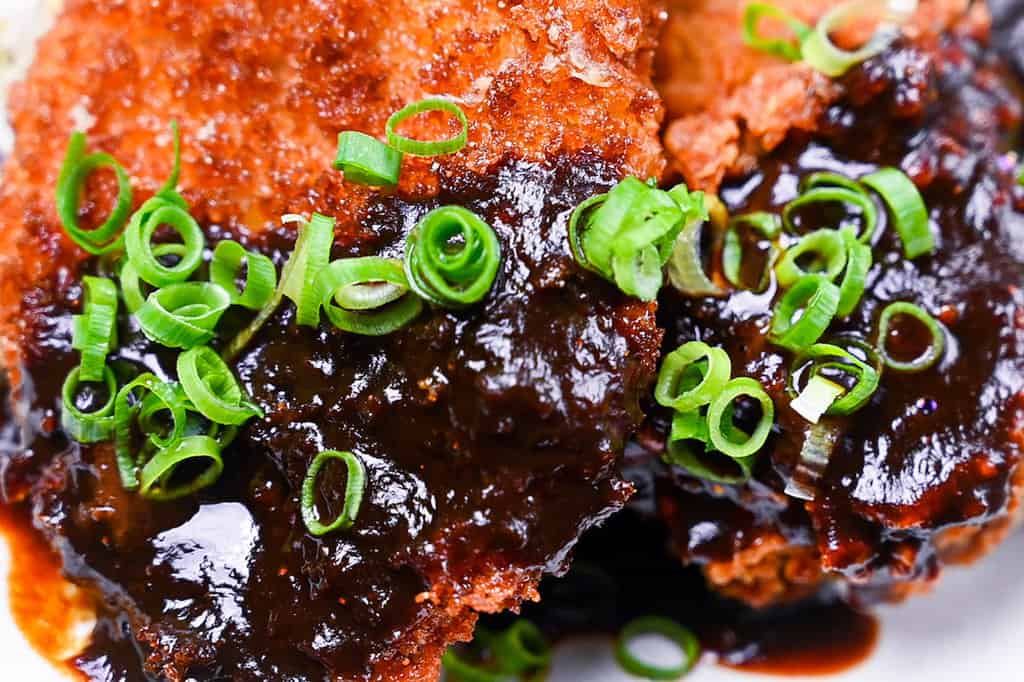

How I Developed This Recipe
As someone who grew up in the Nagoya area, miso katsu has always been my soul food. After enjoying it countless times, I’ve developed an authentic miso sauce recipe that pairs perfectly with a leaner hire katsu.
This sauce is inspired by the famous Yabaton-style flavor, making it a genuine local recipe.
If you’re a fan of miso katsu or interested in trying this Nagoya specialty, I encourage you to give this recipe a try for a taste of true local cuisine.
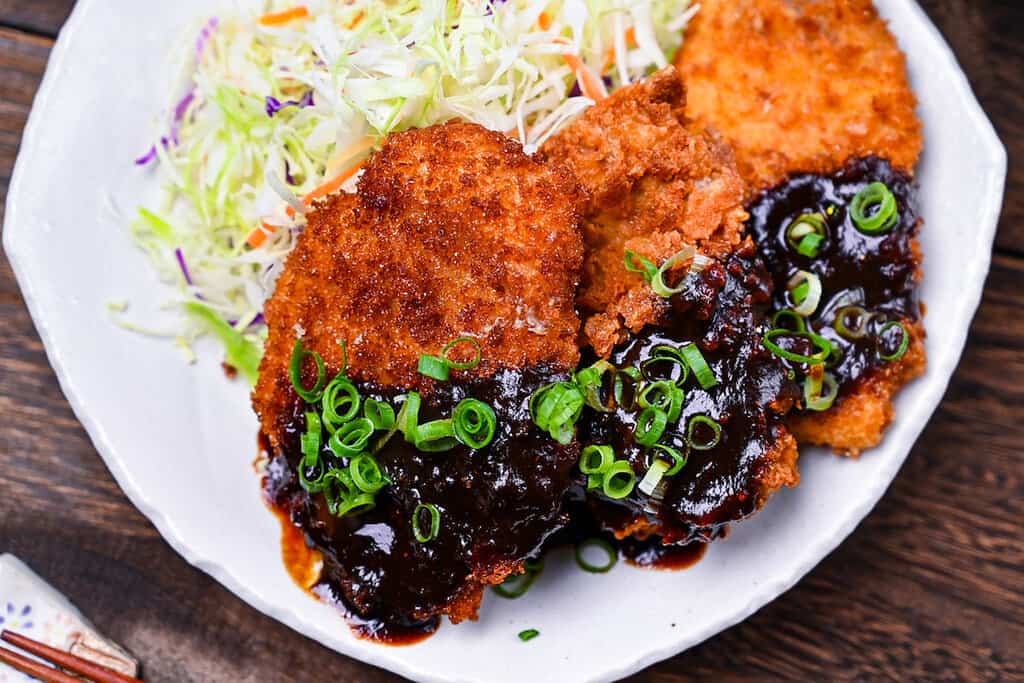
Ingredients & Substitution Ideas
- Miso Katsu Sauce: For the sauce, I used dashi stock, red miso paste (hatcho miso), sake, mirin, soy sauce, light brown sugar, and white sesame seeds. This combination creates a rich and flavorful sauce that’s perfect for the dish.
- Pork: Either a tenderloin block or precut medallions are best suited for hire katsu.
- Batter: The batter is a simple mix of all-purpose flour, a medium egg, milk, and panko breadcrumbs. This creates a crisp coating that’s just right for the pork.
- Cooking Oil: I recommend neutral oils with high smoke points such as canola, sunflower, or peanut oil. Personally, I use rice bran oil and extra virgin (white) sesame oil for both shallow and deep frying these days.
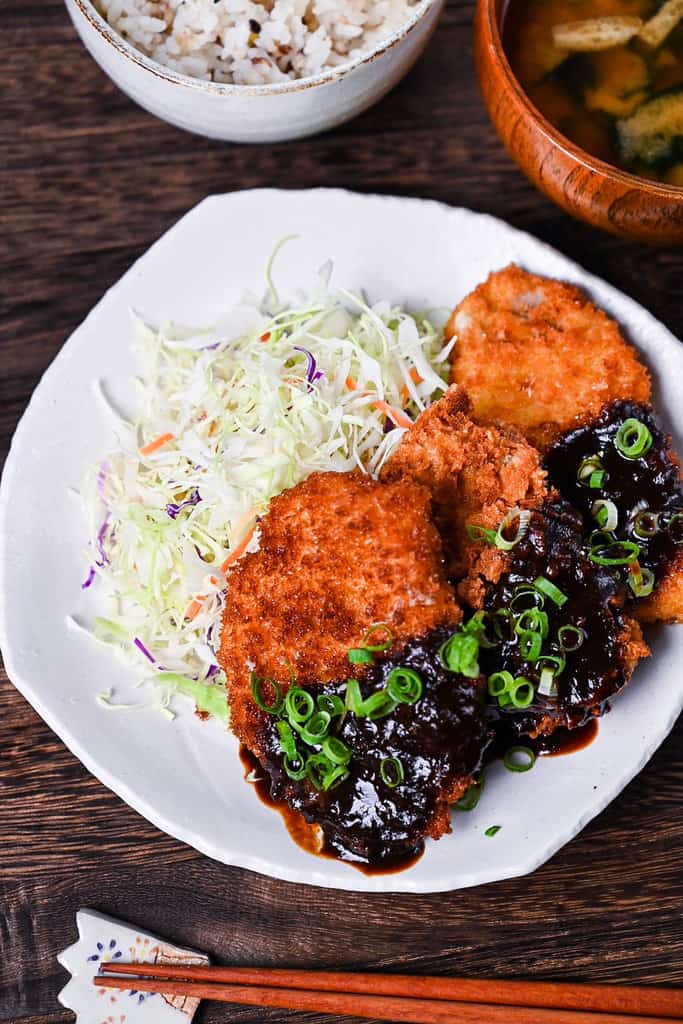
Visual Walkthrough & Tips
Here are my step-by-step instructions for how to make Miso Hire Katsu at home. For ingredient quantities and simplified instructions, scroll down for the Printable Recipe Card below.
Start by preparing the red miso sauce. In a saucepan, combine dashi stock, red miso paste, sake, mirin, soy sauce, and light brown sugar. It’s best to mix these while the saucepan is still cold.
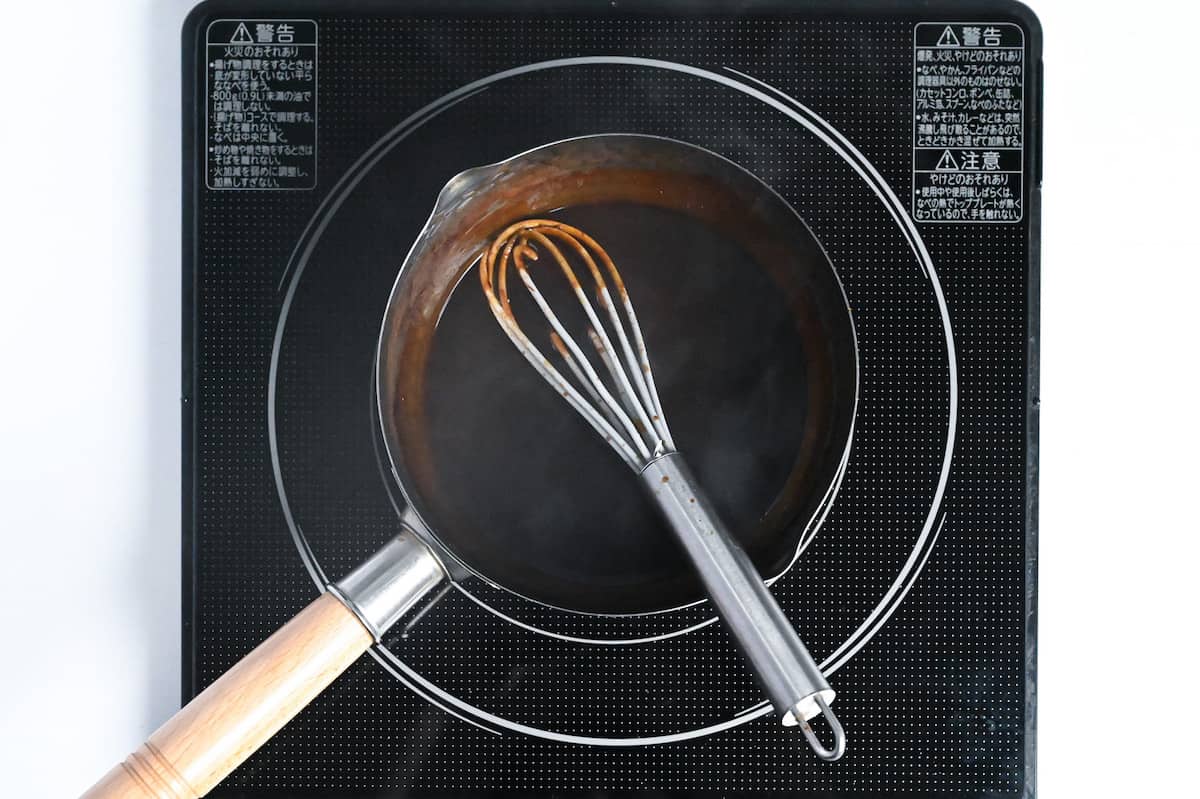
Place the saucepan on the stove and heat over medium. Bring it to a boil, then reduce to a simmer. Let it cook until the sauce thickens slightly and becomes glossy, which takes about 5-10 minutes. Be sure to stir occasionally to prevent burning.
Once done, take it off the heat and stir in the white sesame seeds.
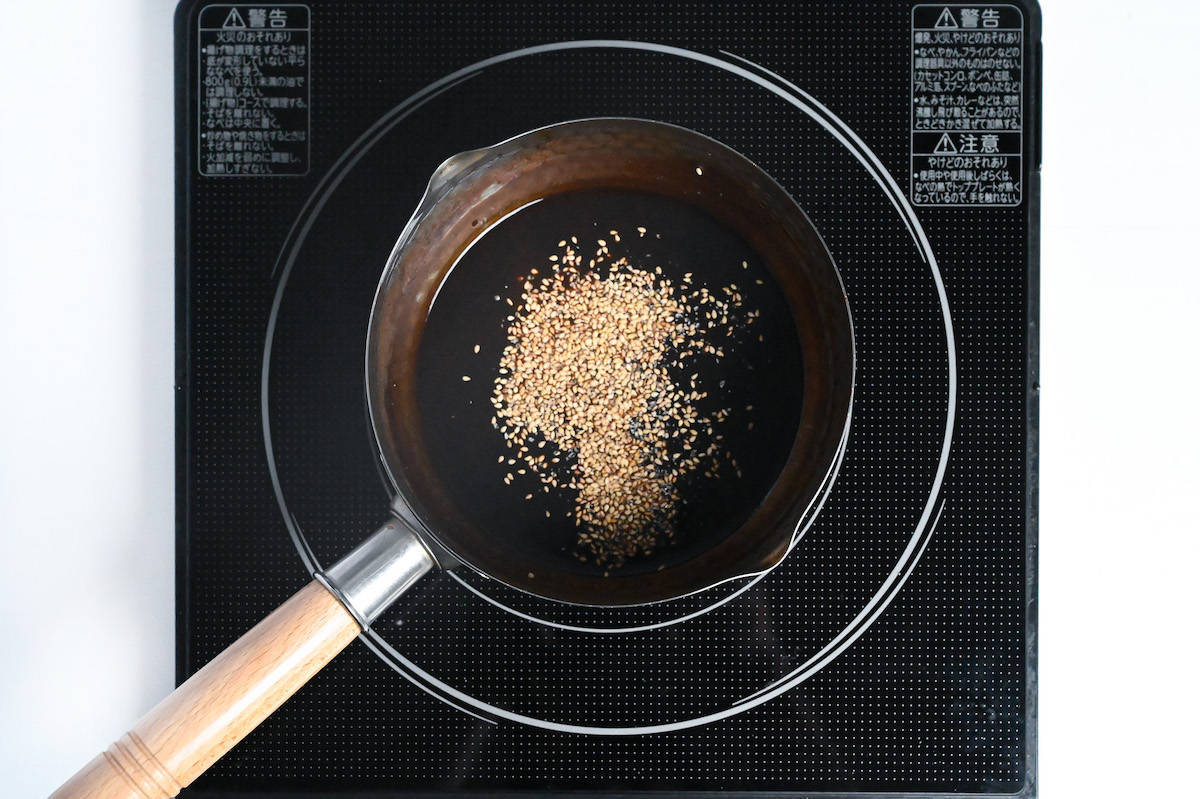
Heat the cooking oil to 180 °C (356 °F).
Cut the pork tenderloin into 2cm thick (a little less than 1 inch) slices at a slight angle to increase the surface area.
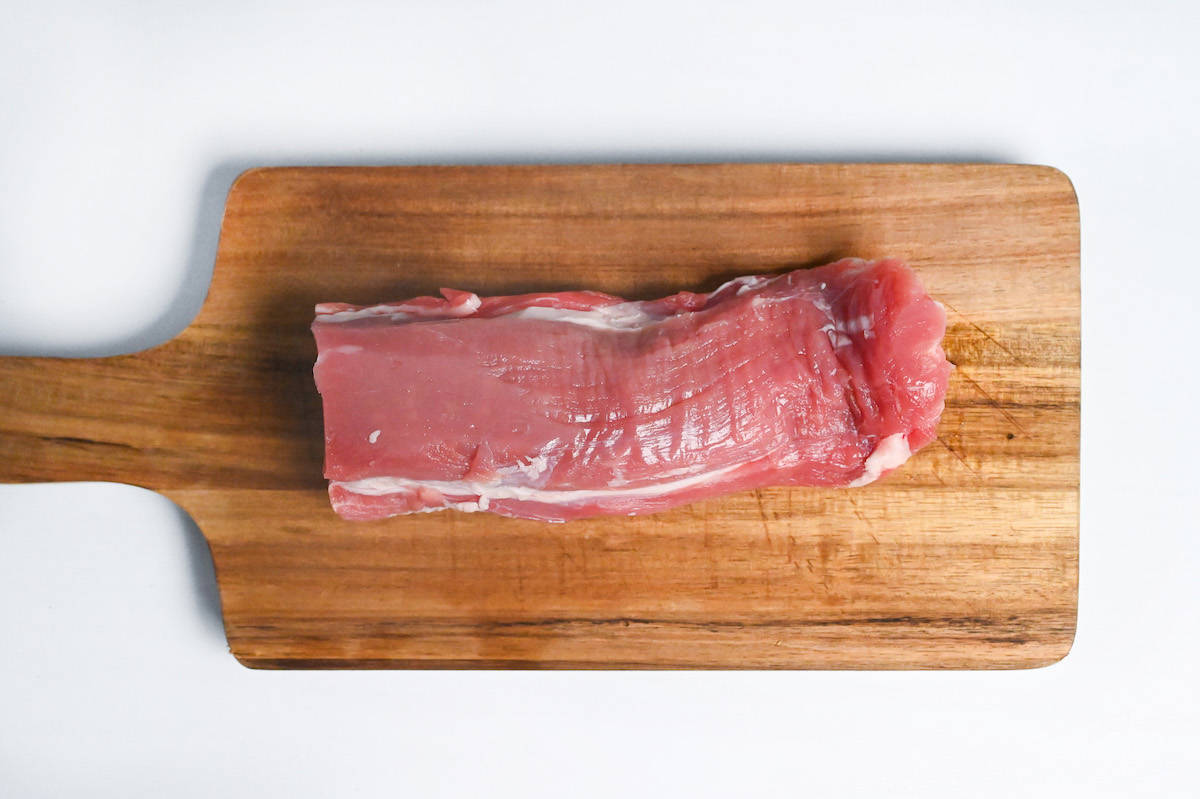

Pierce the slices with a fork. Breaking the fibers makes the tenderloin extra soft and juicy!
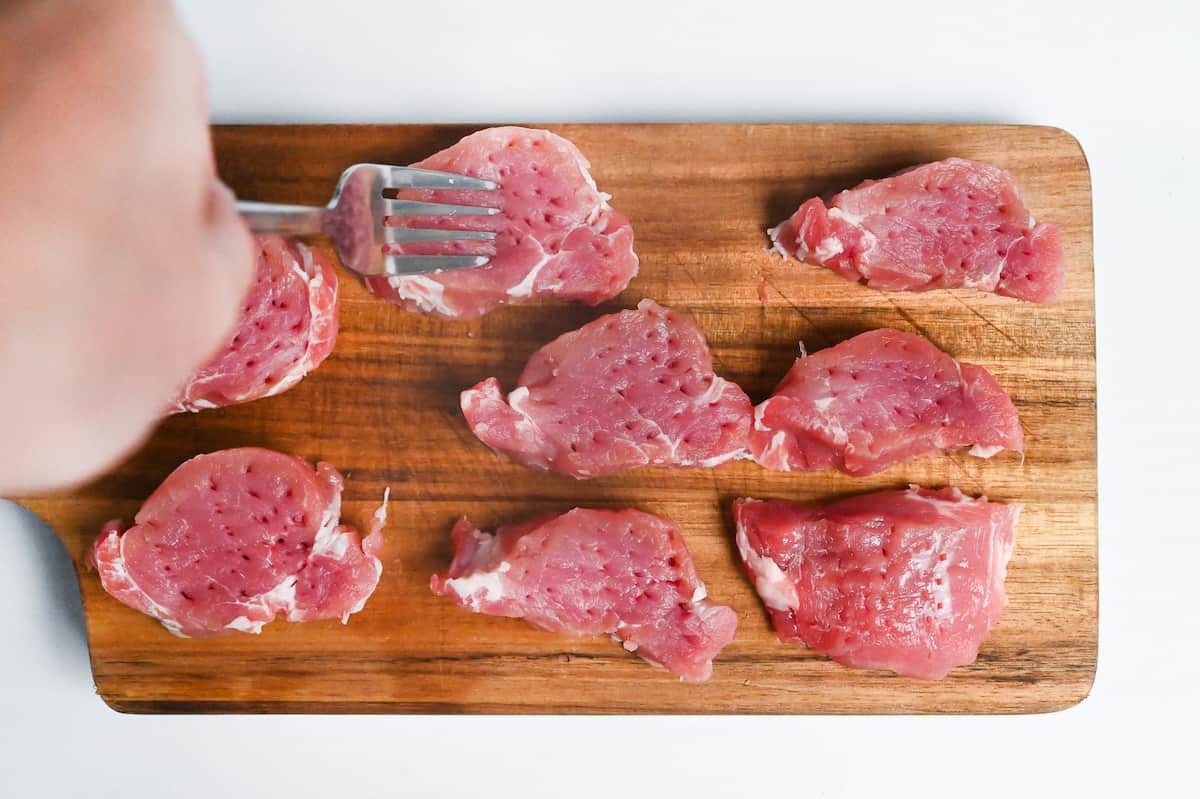
Then, season both sides with a pinch of salt and pepper.
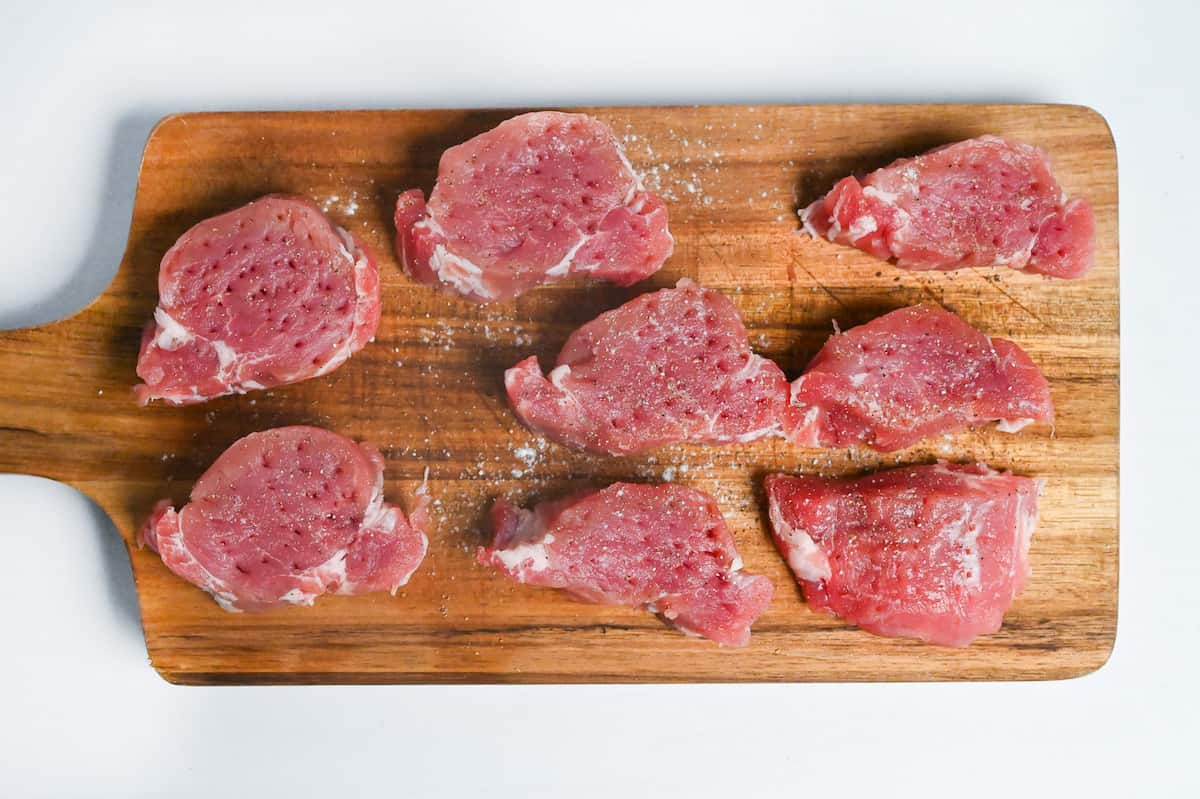
Set up three stations for coating: one with flour, another with beaten egg mixed with milk and cooking oil, and the last with panko breadcrumbs.
Coat each pork slice in flour, shaking off excess, then dip in the egg mixture.
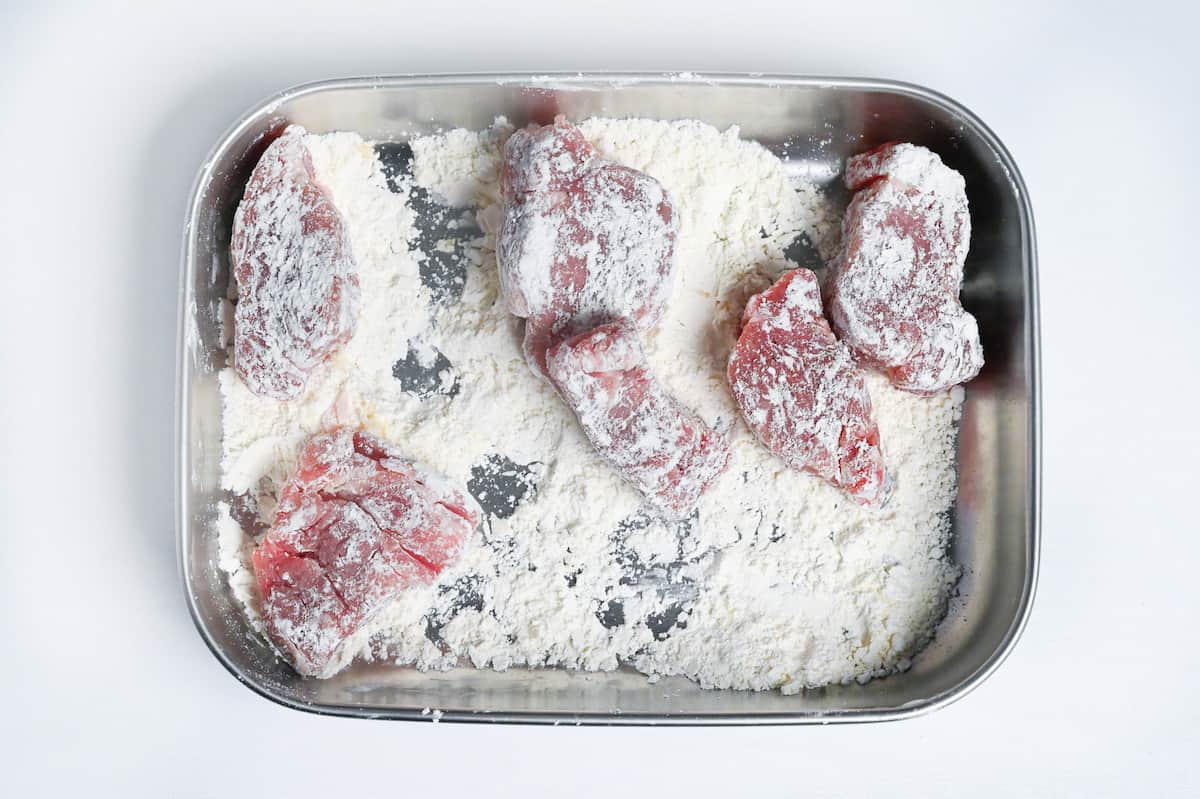
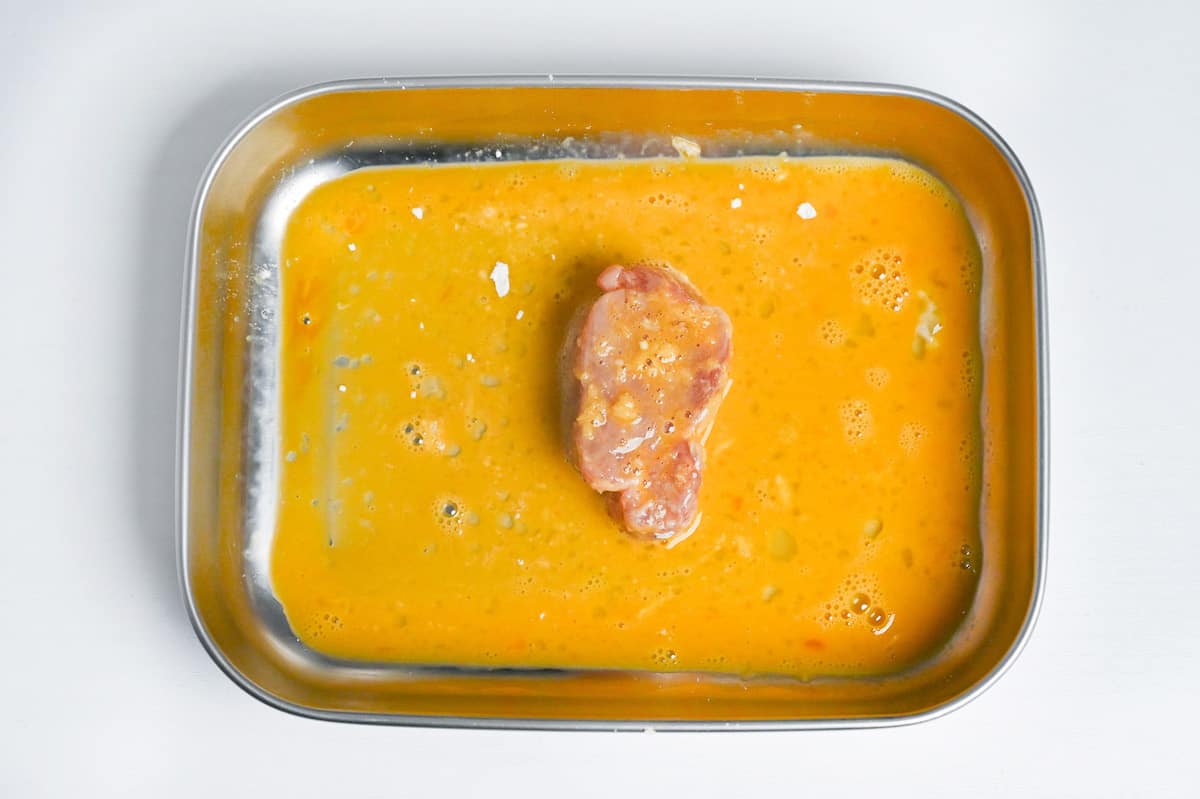
Finally coat generously with breadcrumbs. Press the breadcrumbs onto the pork to secure them.
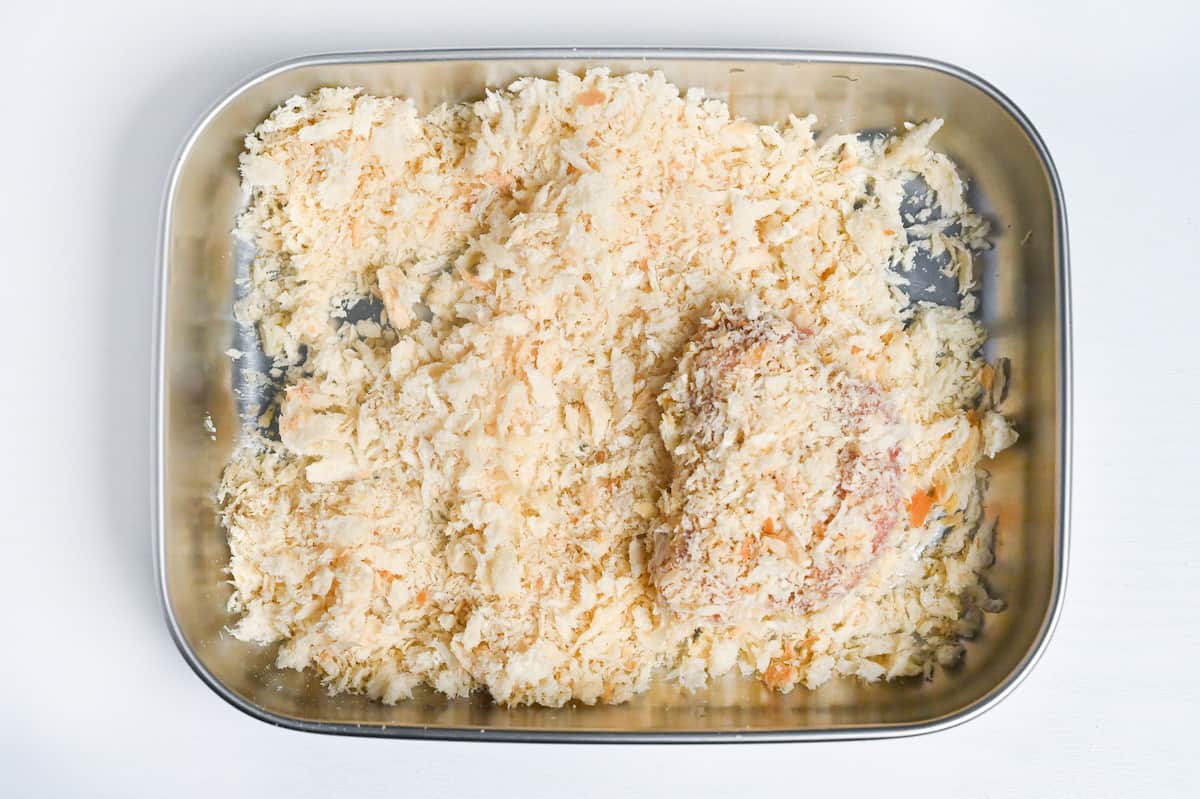
Traditional hire katsu batter is made with a layer of flour, eggs, and breadcrumbs, all of which play a significant role. If one layer is uneven, then the next layer will be compromised.
If there is any part of the meat that is not well coated with each layer, the batter will start to peel and fall off eventually. You need to be generous, yet not have excess. It’s a delicate balance.
Battering the pork firmly and evenly with each layer is one key for sure!
Once the pork is coated completely, deep dry them for 4 minutes at 180°C (355°F).
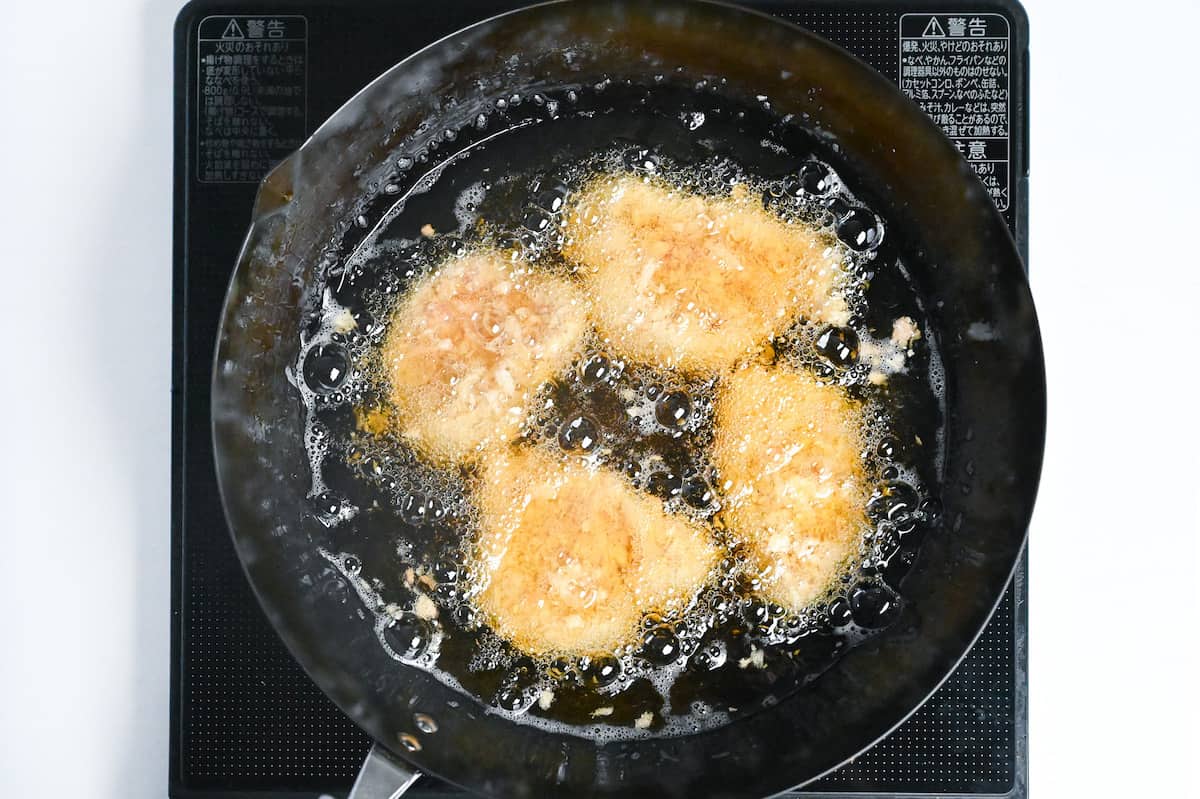
It’s also important that you turn them over half way through cooking. Other than turning them, don’t touch or interfere with them while frying! This can cause the breadcrumbs to fall off.
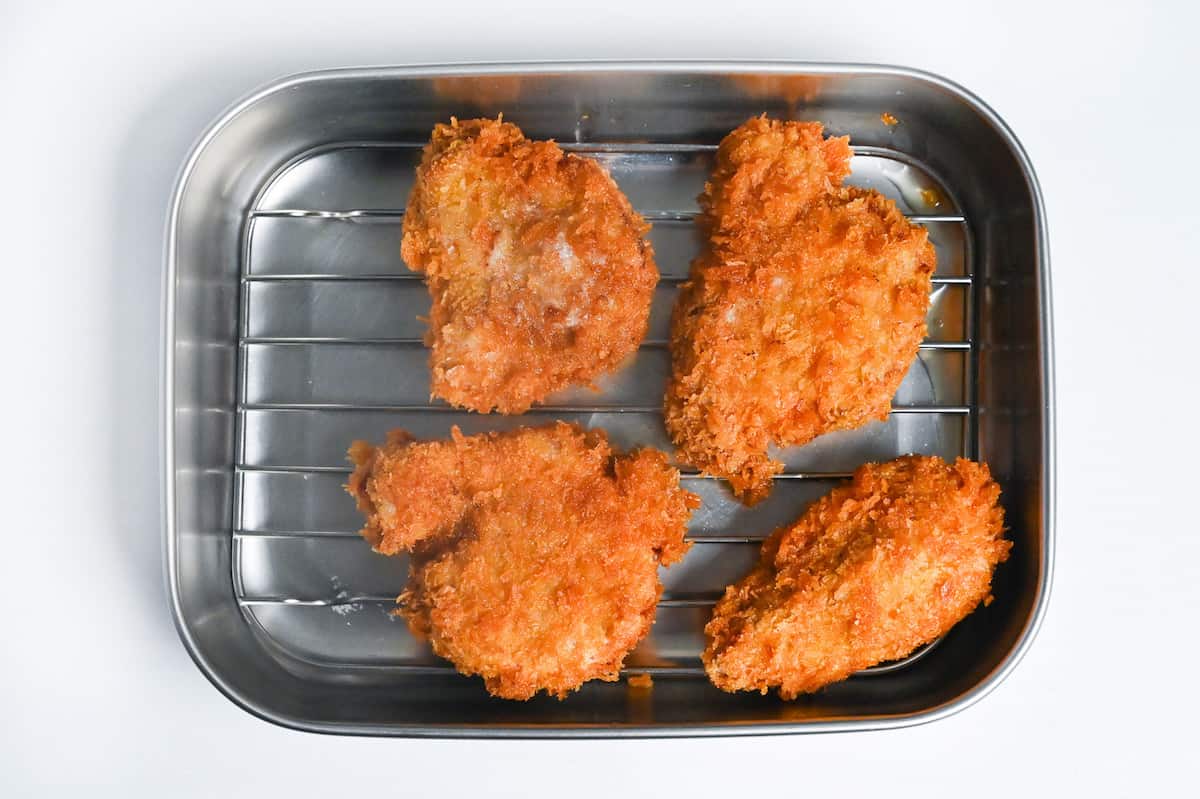
Serve the Hire Katsu on a plate, drizzle with the prepared red miso sauce, and enjoy it alongside shredded cabbage and rice.
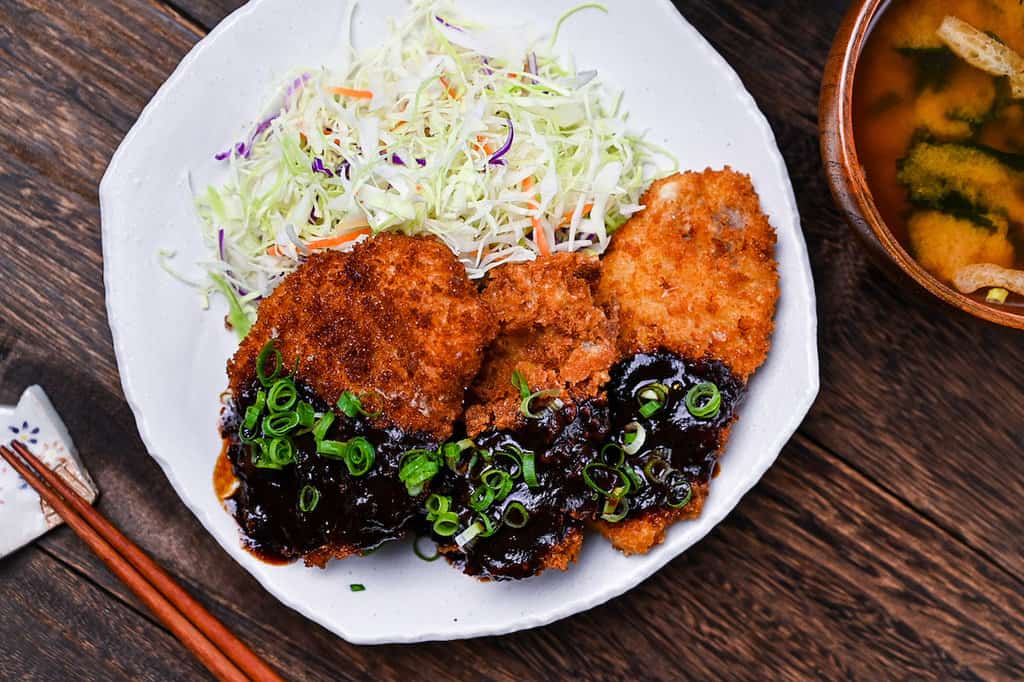
FAQ
Authentic miso katsu sauce is exclusively made with red miso. Other types of miso wouldn’t achieve the rich flavor and deep color that miso katsu is so famous for. As the name suggests, red miso refers to miso paste with a dark red appearance. However, in the miso katsu context, red miso is mostly to do with hatcho miso (八丁味噌).
While hatcho red miso is made from pure soybeans, there are other kinds of “red miso” made from rice and is eaten mainly in northern Japan.
I can actually go into more details on hatcho miso as I literally lived 10 minutes away from their factory when I was a kid. Hatcho miso is made from only soybeans and salt, prepared in a large wooden vat, and weighed down with natural river stones piled up like a mountain by craftsmen, and matured through natural brewing for two summers and two winters (over two years). We also make miso soup with hacho miso in this region.
If you want to learn more about authentic Hatcho miso, check out their website (available in Japanese, English, French and Italian).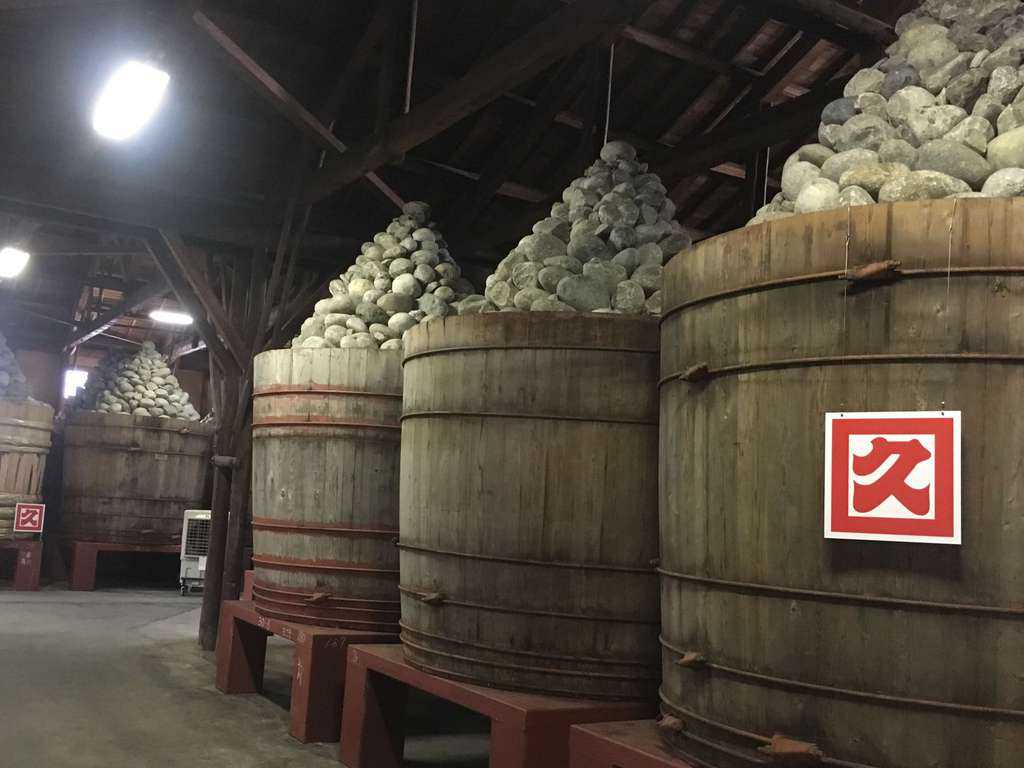
Miso katsu is usually served as teishoku style (shredded cabbage, a bowl of rice, miso soup and pickles). Alternatively you can make misokatsu donburi by layering a bowl of rice with a layer of shredded cabbage and then topping it with the miso katsu. Miso katsu sandwich is also popular. (Check out my katsu sando recipe here.)
Miso katsu originates from Nagoya and is actually a dish inspired by tendon (tempura donburi rice bowl).
When I think of tonkatsu as a Japanese, I think of rosu katsu first. Rosu katsu is usually made from either loin or boneless rib parts. On the other hand, hire katsu is smaller, leaner and made from tenderloin (medallion) part of the pork.
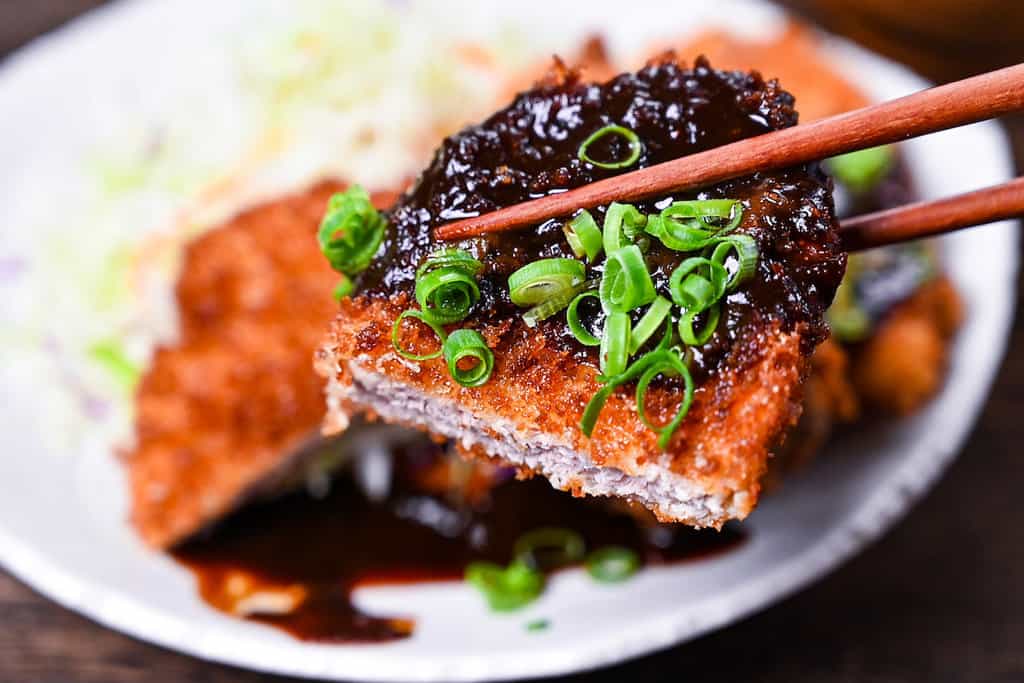
I hope you enjoy this Hire Miso Katsu recipe! If you try it out, I’d really appreciate it if you could spare a moment to let me know what you thought by giving a review and star rating in the comments below. It’s also helpful to share any adjustments you made to the recipe with our other readers. Thank you!
More Nagoya Meshi Recipes

Hire Katsu with Authentic Nagoya Red Miso Sauce
Ingredients
Miso katsu sauce
- 100 ml dashi stock
- 2 tbsp red miso paste
- 1 tbsp sake
- 1 ½ tbsp mirin
- 1 tsp Japanese soy sauce (koikuchi shoyu)
- 2 tbsp light brown sugar
- ½ tbsp toasted white sesame seeds
Hire Katsu
- 200 g pork tenderloin fillet or precut medallions
- salt and pepper
- 4 tbsp all-purpose flour for dusting
- 1 egg
- 1 tbsp milk
- 1 tsp cooking oil
- 60 g panko breadcrumbs see how to make your own panko breadcrumbs here
- cooking oil for deep frying
My recommended brands of ingredients and seasonings can be found in my Japanese pantry guide.
Can’t find certain Japanese ingredients? See my substitution guide here.
Instructions
Red Miso Sauce
- Add 100 ml dashi stock, 2 tbsp red miso paste, 1 tbsp sake, 1 ½ tbsp mirin, 1 tsp Japanese soy sauce (koikuchi shoyu) and 2 tbsp light brown sugar to a cold saucepan and mix well. Place the pan on the stove and bring to a boil over a medium heat. Once boiling, lower to a simmer.

- Cook the sauce until slightly thickened and glossy (approx 5-10 mins). Mix occasionally to prevent burning. Remove from the heat and mix in ½ tbsp toasted white sesame seeds.

Hire Katsu
- Start preheating the cooking oil to to 180 °C (356 °F). Cut 200 g pork tenderloin fillet into 2cm slices at a slight angle to increase the surface area.

- Pierce both sides a few times with a fork.

- Sprinkle a small pinch of salt and pepper on both sides of each medallion.

- Prepare a plate of 4 tbsp all-purpose flour and another one with 60 g panko breadcrumbs. Crack 1 egg into a wide container and mix in 1 tbsp milk and 1 tsp cooking oil.

- Coat each pork medallion with a thin layer of flour, be sure to brush off any excess.

- One by one, coat the medallion with an even layer of egg mixture and then a generous coating of panko breadcrumbs.

- Press the breadcrumbs down to secure them and prevent them from falling off.

- Place the medallions in the oil and deep fry for 4 minutes in total. Turn half way through to ensure even cooking. (Make sure not to overcrowd the pot.)

- Remove the katsu from the oil and place on a wire rack to allow the excess oil to drip off.

- Dish up and drizzle the red miso sauce over the top.

- Served with shredded cabbage and rice and enjoy!
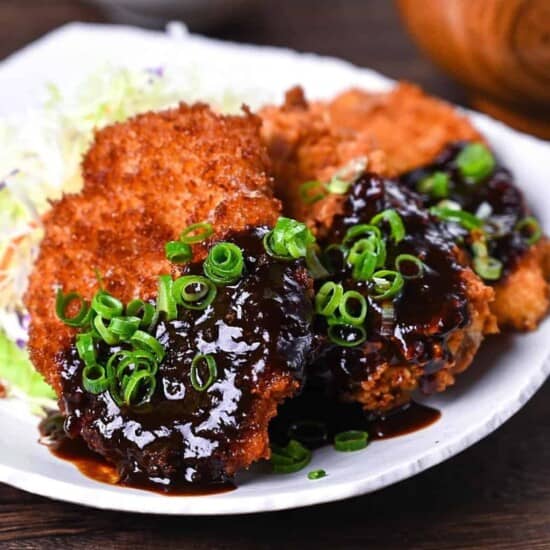


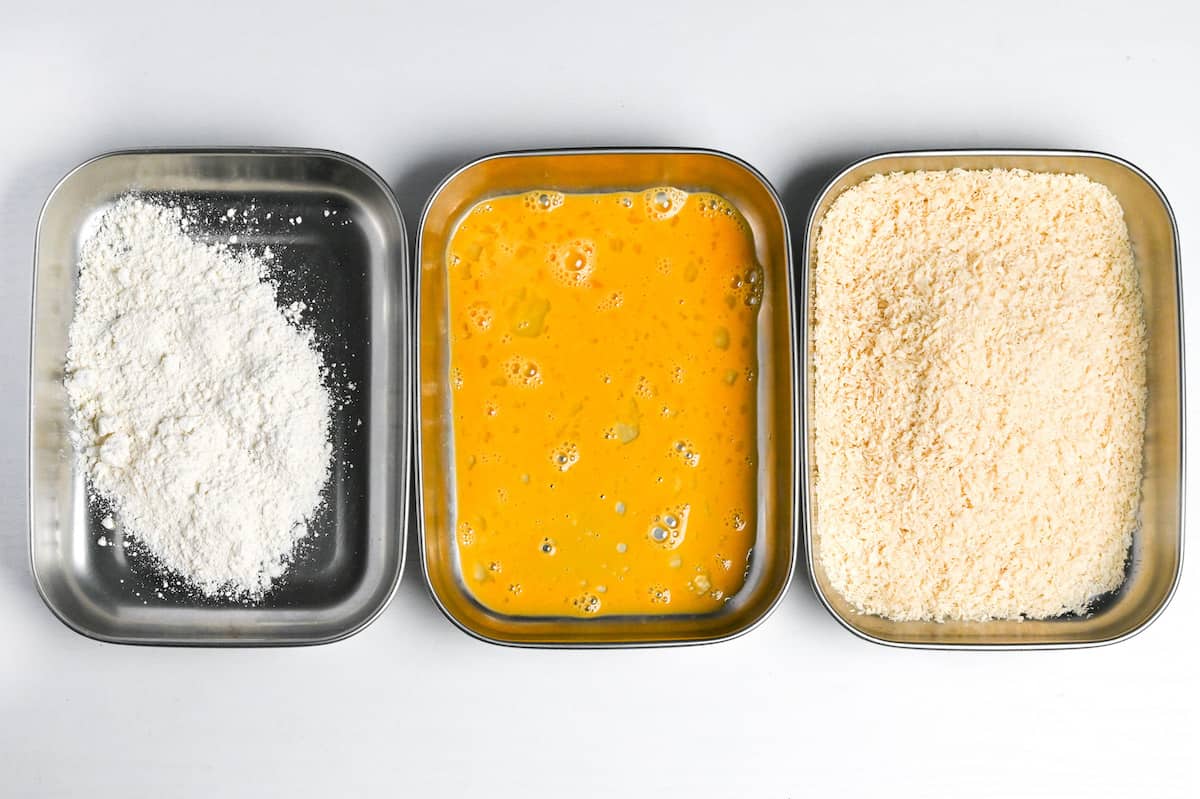
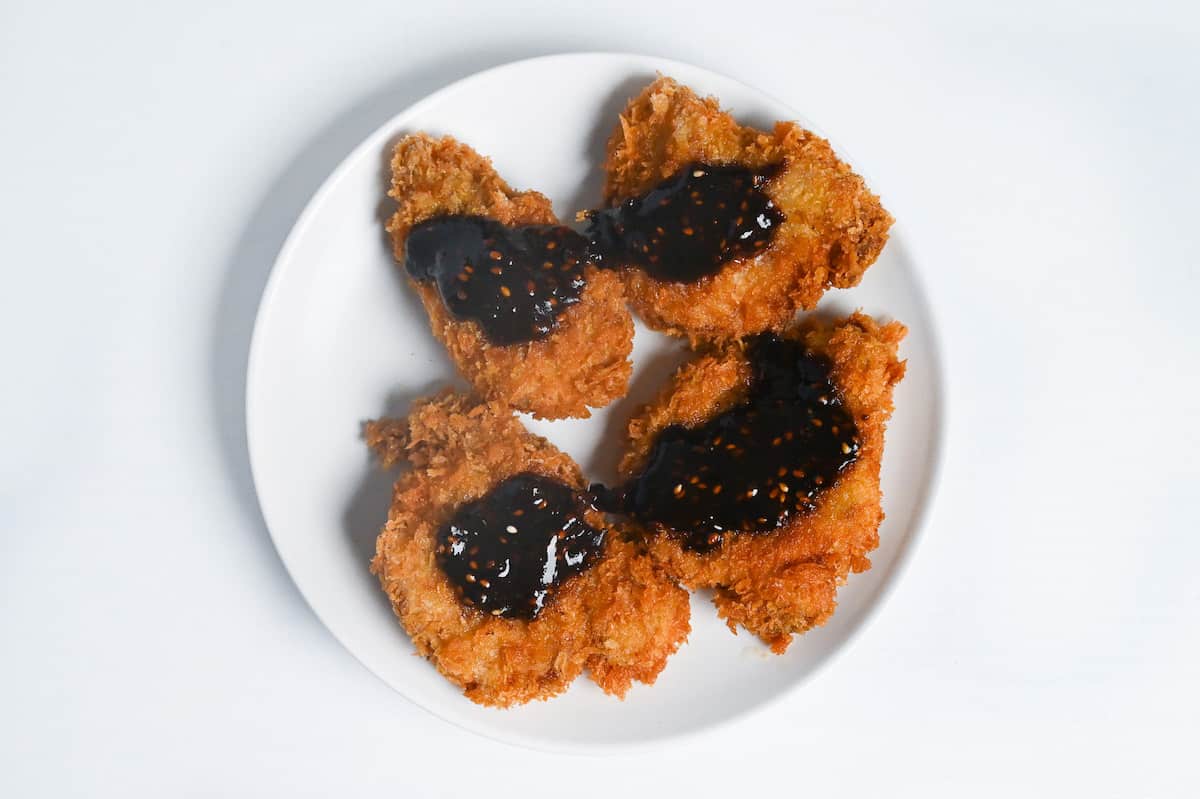
I went to Nagoya and enjoyed the miso katsu — and I actually went to the Hatcho Miso Factory in Okazaki. My friends and I were given a tour by the owner of company. I bought two different containers of their organic miso paste. Can’t wait to try this recipe in my kitchen!
Hi Annette,
Thank you for sharing your experience.
What a small world, I literally grew up only 10 minutes from their factory!
I hope you enjoy this recipe!
Yuto
Delicious. I didn’t have red miso so I used white miso and red cabbage. Thank you for this recipe.
Hi Magdalena,
Thank you so much for trying this recipe and sharing your picture! Looking delicious! I’m so happy that you enjoyed it!
Yuto